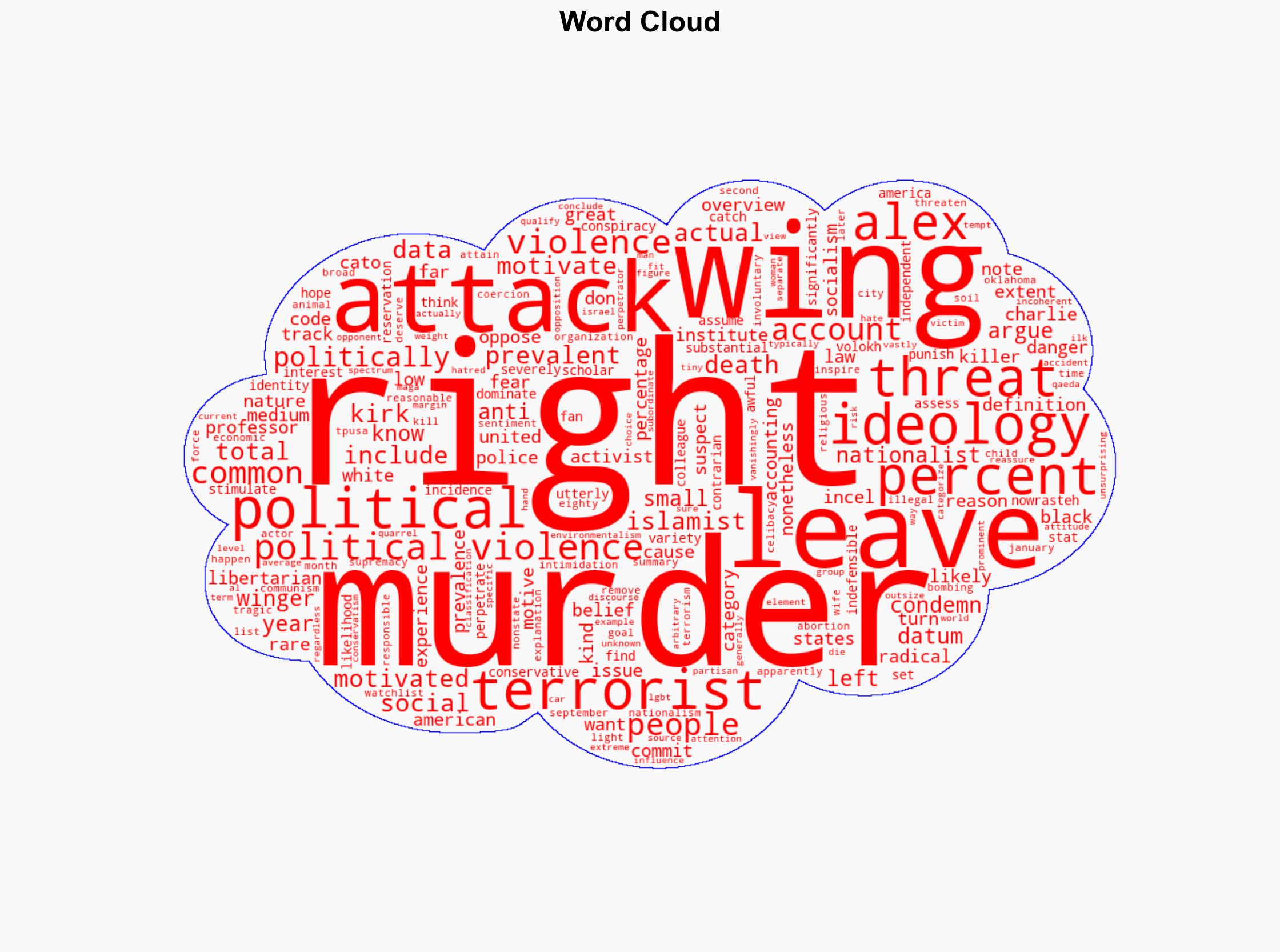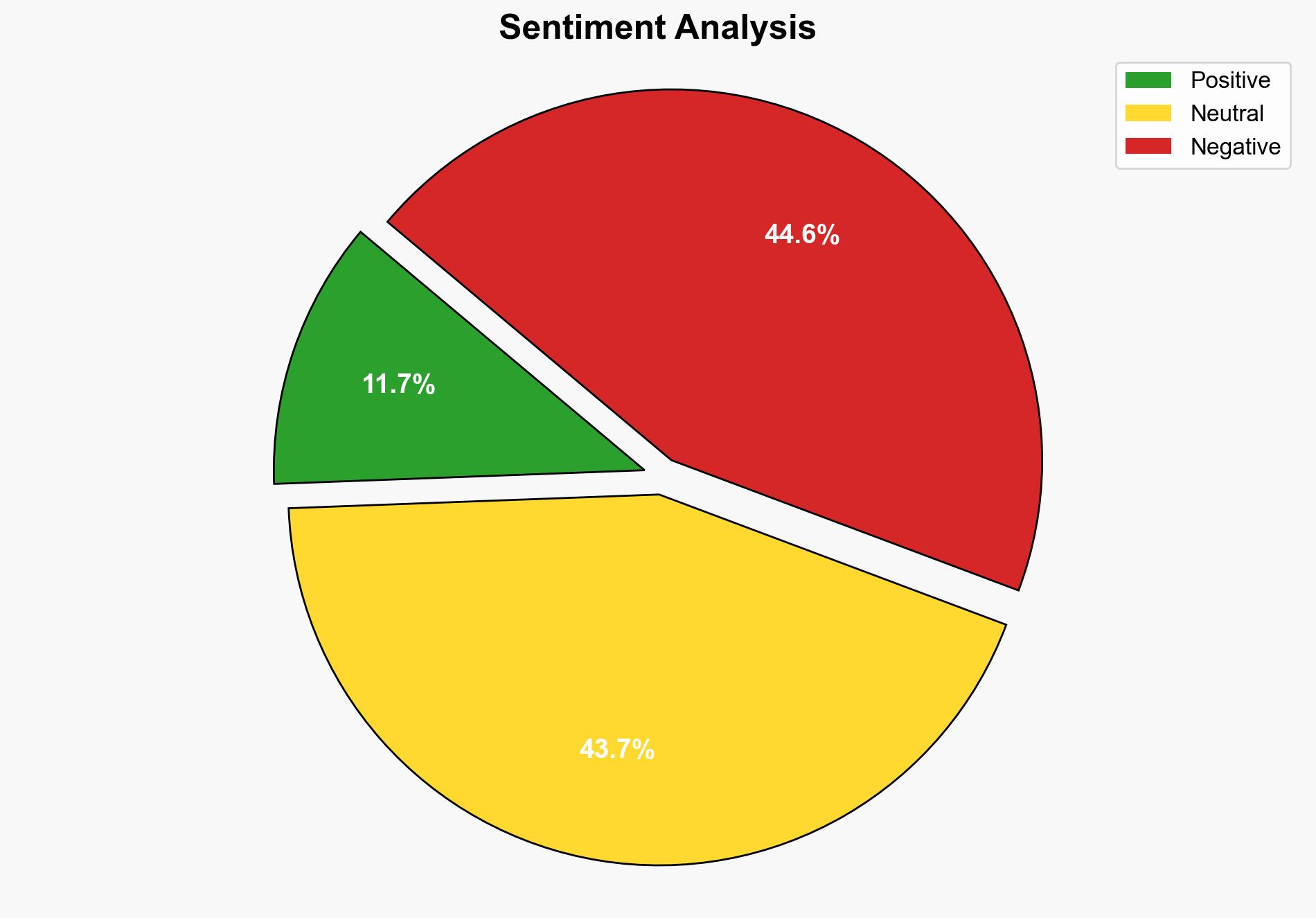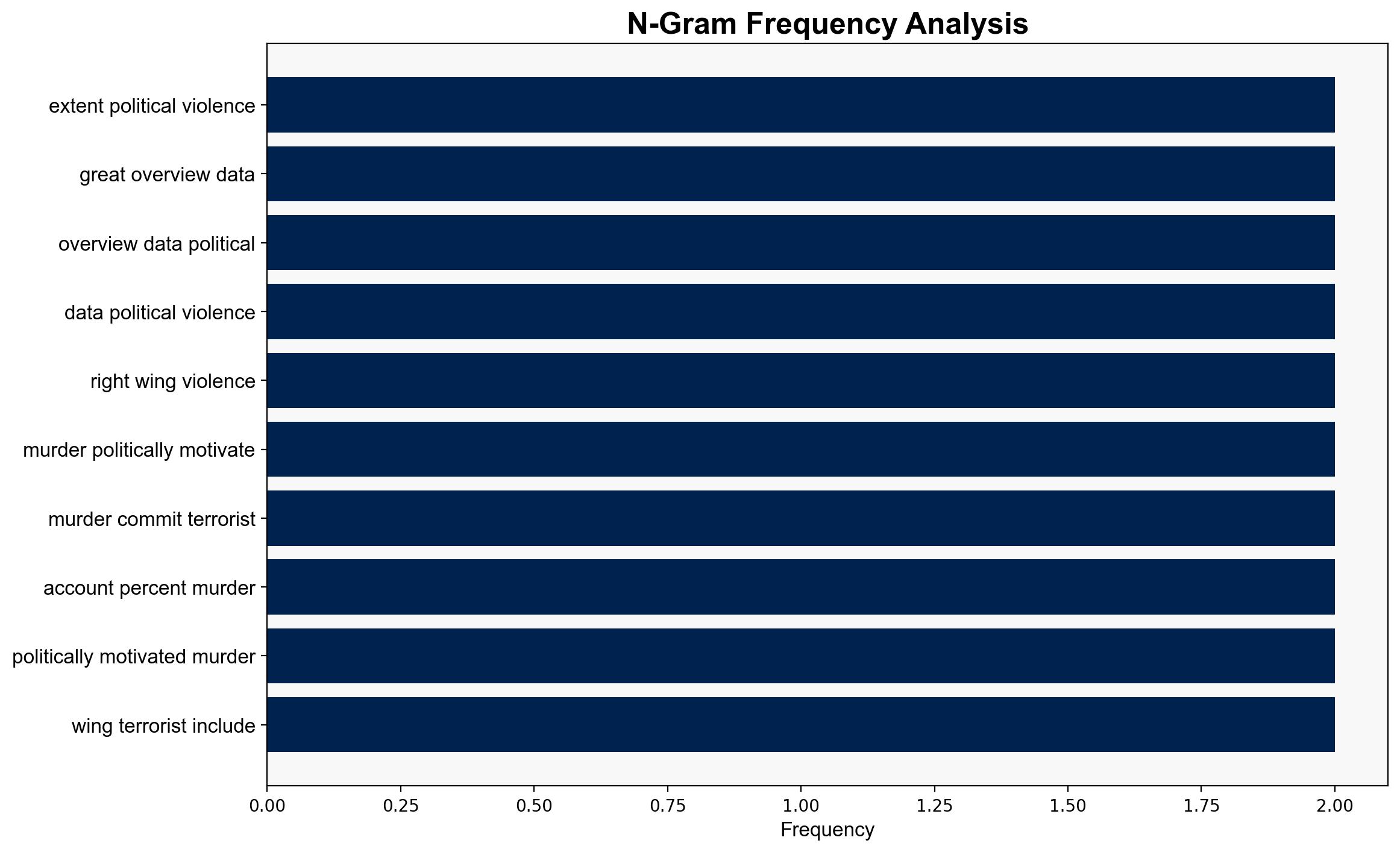Assessing the Extent of Political Violence in America – Reason
Published on: 2025-09-12
Intelligence Report: Assessing the Extent of Political Violence in America – Reason
1. BLUF (Bottom Line Up Front)
The analysis suggests that right-wing political violence is more prevalent than left-wing violence in the United States, although the overall incidence of politically motivated violence remains low. The most supported hypothesis is that right-wing violence is statistically more significant, but classification challenges and ideological biases complicate the data. Confidence level: Moderate. Recommended action: Enhance data collection methodologies and promote bipartisan dialogue to address root causes of political violence.
2. Competing Hypotheses
1. **Hypothesis 1**: Right-wing political violence is more prevalent than left-wing violence in the United States, as indicated by the data from the Cato Institute.
2. **Hypothesis 2**: The perceived prevalence of right-wing violence is skewed due to classification biases and the inclusion of certain incidents that may not fit neatly into political categories.
Using the Analysis of Competing Hypotheses (ACH) 2.0, Hypothesis 1 is better supported by the available data, which shows a higher percentage of politically motivated murders attributed to right-wing ideologies. However, Hypothesis 2 highlights potential biases in data classification and interpretation.
3. Key Assumptions and Red Flags
– **Assumptions**: The classification of political violence incidents is accurate and unbiased. The data sources are comprehensive and reliable.
– **Red Flags**: Potential classification biases, particularly in defining what constitutes right-wing versus left-wing violence. The possibility of underreporting or misclassification of incidents.
– **Blind Spots**: Lack of detailed data on the motivations behind politically motivated murders, and the potential influence of media narratives on public perception.
4. Implications and Strategic Risks
– **Patterns**: A potential increase in politically motivated violence could lead to heightened polarization and societal division.
– **Cascading Threats**: Escalation of violence could result in retaliatory attacks, increased domestic terrorism, and strain on law enforcement resources.
– **Economic and Geopolitical Dimensions**: Political instability may deter investment and affect international perceptions of U.S. stability.
– **Psychological Dimensions**: Public fear and anxiety could increase, potentially leading to radicalization and further violence.
5. Recommendations and Outlook
- Improve data collection and classification methods to ensure accurate representation of political violence incidents.
- Foster bipartisan initiatives to address the root causes of political violence and promote national unity.
- Scenario Projections:
- Best: Reduction in politically motivated violence through effective policy interventions and public awareness campaigns.
- Worst: Escalation of violence leading to widespread civil unrest and destabilization.
- Most Likely: Continued low-level incidents with periodic spikes in violence, necessitating ongoing vigilance and response strategies.
6. Key Individuals and Entities
– Charlie Kirk
– Alex Nowrasteh
7. Thematic Tags
national security threats, cybersecurity, counter-terrorism, regional focus





